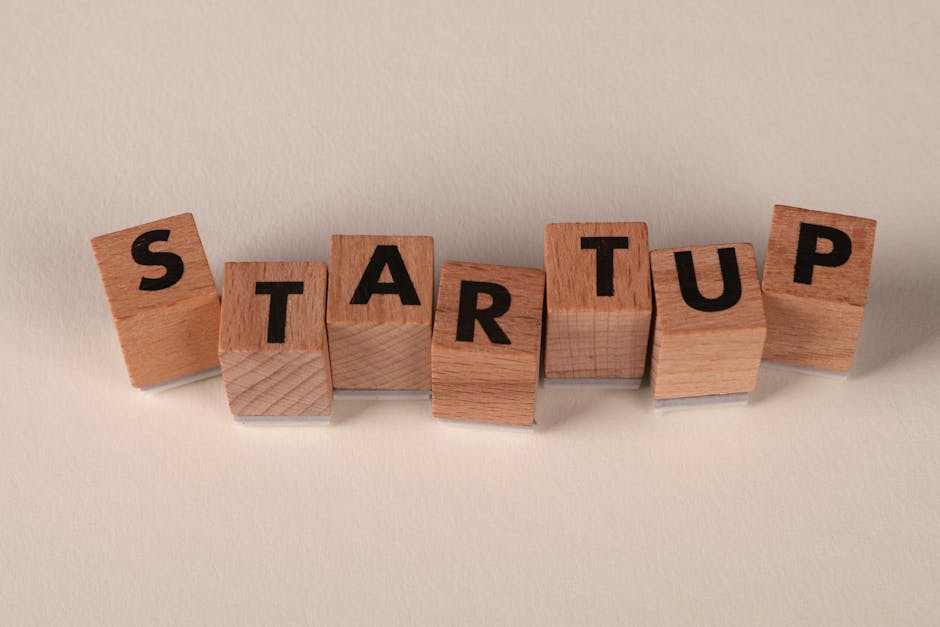Startup growth strategies are the engine behind the world’s most innovative companies, and in 2025, the landscape is more dynamic than ever. At InnExo, we believe that next-level innovation starts with a clear understanding of what drives sustainable startup growth. In this comprehensive guide, we’ll explore the essential strategies that every founder needs to master, from embedding innovation into your business model to leveraging AI, building agile teams, and navigating funding in today’s volatile market. Whether you’re launching your first venture or scaling up, these proven approaches will help you build a resilient, future-ready startup.
Aligning Innovation with Market Demand

Photo by Ivan Samkov on Pexels
Every successful startup begins with a bold idea, but true growth comes from solving real problems for real customers. In 2025, innovation alone is not a business model; it’s the foundation upon which you must build a product or service that meets a genuine market need. Startups that thrive are those who rigorously validate their ideas through market research, customer interviews, and feedback loops, ensuring that they are not just creating for the sake of novelty but delivering solutions that matter.
Industry-specific innovation is gaining traction. Whether it’s AI-driven diagnostics in healthcare, logistics optimization in retail, or compliance automation in finance, the most successful startups are embedding themselves into their customers’ workflows. This approach builds trust and accelerates adoption, as clients see direct, measurable improvements in their daily operations.
To align innovation with market demand, founders must:
- Engage with customers early and often to identify pain points.
- Iterate rapidly based on real-world feedback, not just internal assumptions.
- Focus on delivering tangible value, not just features.
- Monitor industry trends to anticipate shifts in demand and technology.
By integrating customer-centric innovation into your core strategy, you lay the groundwork for scalable, long-term growth.
Leveraging AI and Emerging Technologies

Artificial intelligence has moved from buzzword to backbone for startups in 2025. The most forward-thinking companies are not just using AI as an add-on; they are building their entire business models around it. Startups have a unique advantage over larger competitors, as they can integrate AI from the ground up without being encumbered by legacy systems or slow-moving corporate structures.
AI-powered startups are transforming industries:
- Healthcare: Early disease detection and personalized treatment plans.
- Customer Service: AI chatbots that handle complex queries and deliver seamless experiences.
- Creative Industries: Tools that empower designers, writers, and musicians to work more efficiently.
Beyond AI, startups are also exploring technologies like blockchain for decentralization, IoT for smarter products, and advanced analytics for data-driven decision-making. The key is to choose technologies that directly enhance your value proposition and solve real customer challenges.
To successfully leverage emerging technologies:
- Stay informed about the latest advancements and assess their relevance to your business.
- Build a tech-savvy team that can experiment and implement new solutions quickly.
- Prioritize technologies that offer clear, measurable benefits to your customers.
By making technology a core part of your strategy, you position your startup as an industry leader and innovator.
Smart Funding Strategies for Sustainable Growth

Photo by RDNE Stock project on Pexels
In today’s unpredictable market, traditional fundraising is no longer the only path to growth. The smartest startups are adopting a diversified approach to funding, combining venture capital with strategic partnerships, government grants, and equity-light accelerator programs. This strategy not only extends your runway but also helps maintain control over your company’s vision and direction.
Key elements of effective funding strategies include:
- Timing: Seek capital when it aligns with product milestones and growth inflection points, not just when funds are low.
- Investor Alignment: Choose investors who share your long-term vision and can offer more than just money—think mentorship, networks, and industry expertise.
- Non-dilutive Funding: Explore grants, competitions, and public sector initiatives to access capital without giving up equity.
- Clear Financial Planning: Set realistic expectations for burn rate and growth timelines, and communicate these clearly to stakeholders.
By approaching funding strategically, you can fuel your startup’s growth without sacrificing agility or control.
Building Agile, High-Performance Teams

Photo by Mateo Franciosi on Pexels
People are the heartbeat of every successful startup. In 2025, the most innovative companies are those that prioritize agility, collaboration, and continuous learning within their teams. Startups can outmaneuver larger competitors by fostering a culture where experimentation is encouraged and rapid iteration is the norm.
To build an agile, high-performance team:
- Hire for adaptability and a growth mindset, not just technical skills.
- Empower employees to take ownership of projects and make decisions.
- Invest in ongoing training to keep skills sharp and relevant.
- Promote open communication and cross-functional collaboration.
Remote and hybrid work models are now standard, enabling startups to tap into global talent pools and scale their teams efficiently. Outsourcing non-core functions, such as administration or customer support, allows founders to focus on innovation and growth.
Ultimately, a strong team culture—rooted in trust, transparency, and shared purpose—drives both resilience and rapid progress.
Scaling Lean: Outsourcing and Operational Efficiency

Lean scaling is a defining characteristic of successful startups in 2025. Instead of building large, rigid organizations, founders are embracing flexible structures that allow them to adapt quickly to market changes. Outsourcing development, support, and administrative tasks enables startups to stay agile, reduce overhead, and focus resources on core innovation.
Operational efficiency goes hand in hand with lean scaling. By implementing streamlined processes and leveraging automation, startups can deliver high-quality products and services with fewer resources. Key practices include:
- Identifying non-core activities that can be outsourced or automated.
- Setting clear performance metrics to ensure quality and accountability.
- Regularly reviewing and optimizing workflows for maximum efficiency.
- Investing in tools that enable remote collaboration and productivity.
This approach not only improves profitability but also creates a foundation for sustainable, scalable growth.
Creating a Resilient Startup Culture

Photo by Nicola Barts on Pexels
Resilience is the hallmark of startups that endure and thrive in changing times. In 2025, building a resilient culture means more than just weathering economic storms—it’s about fostering adaptability, learning from failure, and staying true to your mission even as you pivot or scale.
To cultivate resilience:
- Encourage a mindset of experimentation and continuous improvement.
- Celebrate small wins and learn from setbacks without assigning blame.
- Maintain a clear sense of purpose that guides decision-making in uncertain times.
- Prioritize mental health and well-being to prevent burnout and sustain motivation.
A resilient culture attracts top talent, builds investor confidence, and enables startups to capitalize on new opportunities as they arise.
Measuring Success: Metrics That Matter

Photo by RDNE Stock project on Pexels
Finally, effective startup growth strategies require a data-driven approach to measuring success. In 2025, the most successful founders are those who track the right metrics—not just vanity numbers, but indicators that truly reflect business health and customer value.
Essential metrics for startups include:
- Customer Acquisition Cost (CAC) and Lifetime Value (LTV)
- Churn rate and retention metrics
- Burn rate and runway
- Product adoption and engagement rates
- Revenue growth and profitability
By regularly analyzing these metrics, founders can make informed decisions, identify areas for improvement, and demonstrate progress to investors and stakeholders.
Conclusion: The Future of Startup Growth Strategies

Photo by Kampus Production on Pexels
The startup landscape in 2025 is defined by rapid change, technological innovation, and the need for resilience. By aligning innovation with market demand, leveraging AI and emerging technologies, adopting smart funding strategies, building agile teams, scaling lean, fostering a resilient culture, and measuring what matters, you can position your startup for long-term success.
At InnExo, we believe that next-level innovation starts with a commitment to continuous learning and adaptation. Embrace these strategies, and you’ll be well-equipped to navigate the challenges and opportunities of the modern startup world.
Sources
- https://www.frankrimerman.com/resources/mastering-ai-startup-funding-strategies-in-2025/
- https://www.aaiatech.org/the-evolving-landscape-of-startup-innovation-in-2025/
- https://www.foundernest.com/resources/blog-posts/how-startups-are-reshaping-the-innovation-landscape-in-2025
- https://www.superstaff.com/blog/startup-growth-strategies/





